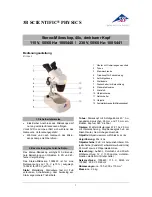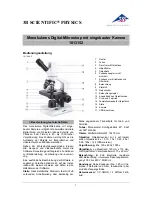
Calibration, Maintenance, Troubleshooting and Warranty
SPM Calibration Overview
276
MultiMode SPM Instruction Manual
Rev. B
Veeco recommends that you adhere to the following scanner calibration schedule (see
Table 15.1a
Calibration Schedule
Note:
Small Scan Size Calibration
: If using scan sizes of 5µm or smaller, Veeco
recommends calibrating the scanner for small scan sizes. Contact Veeco for
further instructions.
15.1.1
Theory Behind Calibration
Scanners typically consist of a hollow tube made of piezoelectric material such as PZT (lead
zirconium titanate). Piezo materials contract and elongate when voltage is applied, according to
whether the voltage is negative or positive, and depending upon the orientation of the material’s
polarized grain structure. Scanners are used to precisely manipulate sample-tip movement in order
to scan the sample surface. The scanner tube moves the sample relative to a stationary tip.
Not all scanners react identically to a voltage. Because of slight variations in the orientation and
size of the piezoelectric granular structure (polarity), material thickness, etc., each scanner has a
unique “sensitivity,” or a ratio of piezo voltage-to-piezo movement. Sensitivity is not a linear
relationship, however. Because piezo scanners exhibit more sensitivity (i.e., more movement per
volt) at higher voltages than they do at lower voltages, the sensitivity curve is just that—curved.
This non-linear relationship is determined for each scanner crystal and follows it for the life of the
scanner. As the scanner ages, its sensitivity will decrease somewhat, necessitating periodic
recalibration.
The diagram below depicts scanner crystal voltage versus photodiode voltage. In this instance,
detector sensitivity is given as volt per volt, a parameter provided in the
Force Calibration
screen.
Calibration Routine
Time Frame
Frequency
Fine-Tuning Calibration
(or Full X-Y Calibration if required)
First Year
Every 3 months
Subsequent Years
Every 6 months
Z Calibration
(for General Applications)
First Year
Every 3 months
Subsequent Years
Every 6 months
Critical Height Measurements
All Years
Monthly













































